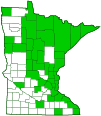Howell’s pussytoes
(Antennaria howellii ssp. neodioica)
Conservation • Description • Habitat • Ecology • Use • Distribution • Taxonomy
Conservation Status |
|
|||||||
| IUCN Red List | not listed |
|||||||
| NatureServe | N5 - Secure SNR - Unranked |
|||||||
| Minnesota | not listed |
|||||||
Description |
||
Howell’s pussytoes (ssp. neodioica) is an evergreen woolly wildflower. It occurs in the United States from Maine to New Jersey west to Washington and Oregon, and in Canada from coast to coast north to the Northwest Territories. It is common in Minnesota. It is found in prairies, fields, pastures, woodland openings, rocky slopes, and dry shores. It grows under full sun in dry to moderately moist sandy soil. Howell’s pussytoes (ssp. neodioica) is an erect, 6″ to 13¾″ (15 to 35 cm) tall, perennial forb that rises on a rosette of basal leaves and a flowering stem from fibrous roots. It spreads by producing above ground runners (stolons). The stolons are leafy, densely woolly, slender, and usually 1¼″ to 3″ (3 to 8 cm) long, sometimes longer. They root at the nodes, often forming colonies. The leaves along the stolons are similar to and almost as large as the basal leaves. Basal leaves are 9⁄16″ to 1⅞″ (14 to 48 mm) long, and ⅛″ to ¾″ (2.5 to 20.0 mm) wide. The leaf blades are spatula-shaped to narrowly or broadly egg-shaped. They narrow at the base to a well-defined stalk (petiole), are pointed or rounded at the tip, and have an abrupt, short, sharp point at the tip (mucronate). There is usually just a single vein extending from the base to the tip. Sometimes there is also a pair of obscure partial veins that can best be seen on the underside. The lower surface is densely covered with white, short, matted or tangled, soft, woolly hairs. On new leaves the upper surface may be grayish-green with sparse, long, gray hairs, or bright green and almost hairless. In either case, the upper surface soon becomes hairless. The margins are untoothed. Basal leaves are often evergreen. A flowering stem arises from the stolon of the previous year’s growth. The stem is erect, sparsely leafy, and densely covered with white woolly hairs. Stem leaves are much smaller than basal leaves. They are alternate, unstalked, linear to narrowly lance-shaped, narrowly pointed at the tip, and 3 ⁄16″ to 1¾″ (8 to 35 mm) long. There is a pointed, bristle-like extension (arista) on the middle and upper leaves, and a short, flat or inrolled, papery extension (flag) at the tip of only the leaves near the inflorescence. Middle and other upper stem leaves are not flagged. The upper and lower surfaces are densely covered with white woolly hairs. The inflorescence is a tight, round-topped cluster (corymb) of usually 4 to 8, sometimes more, narrow flower heads at the end of the stem. Male and female flowers are borne on separate plants. Male plants are very uncommon. When no male plants are present, fertilization of the ovule does not take place and only female plants are produced (parthenogenesis). This results in some populations being composed entirely of female plants. The whorl of 3 to 6 or more bracts (involucre) subtending each flower head on male (staminate) plants is ¼″ (6 mm) long. The involucre on female (pistillate) plants is ¼″ to ⅜″ (6 to 9 mm) long. The bracts of the involucre (phyllaries) are narrow, green or reddish at the base, and white or cream-colored at the tip. The outer bracts are loosely covered with woolly hairs. The flower heads have 20 to 100 white or pinkish, tubular disk florets and no ray florets. Staminate florets are ⅛″ (3.5 mm) long. Pistillate florets are ⅛″ to ¼″ (3.5 to 6.0 mm) long. Staminate plants have numerous columns of stamens protruding above the flower head. The fruit is an elliptic to egg-shaped, 1⁄32″ to 1⁄16″ (0.9 to 1.5 mm) long, one-seeded capsule (cypsela). It is hairless and minutely bumpy (pappilate), and there is a tuft of hairs (pappus) at the tip. On staminate plants the pappus is ⅛″ (4 mm) long, on pistillate plants it is 3⁄16″ to ¼″ (5.5 to 7.0 mm) long. |
||
Height |
||
6″ to 13¾″ (15 to 35 cm) |
||
Flower Color |
||
White to pinkish |
||
Similar Species |
||
Canadian pussytoes (Antennaria howellii ssp. canadensis) basal leaves have just one vien, and are green and hairless on the upper side. Howell’s pussytoes (Antennaria howellii ssp. petaloidea) stolon leaves are smaller than the basal leaves. The basal leaves do not have distinct petioles. All of the middle and upper leaves are flagged. |
||
Habitat |
||
Dry to moderate moisture. Prairies, fields, pastures, woodland openings, rocky slopes, and dry shores. Full sun. Sandy soil. |
||
Ecology |
||
Flowering |
||
Mid-spring to early summer |
||
Pests and Diseases |
||
|
||
Use |
||
|
||
Distribution |
||||
|
Sources |
|||
| 6/21/2022 | ||||
Nativity |
||||
Native |
||||
Occurrence |
||||
|
||||
Taxonomy |
|||
| Kingdom | Plantae (Plants) | ||
| Division | Tracheophyta (Vascular Plants) | ||
| Subdivision | Spermatophytina (Seed Plants) | ||
| Class | Magnoliopsida (Dicots) | ||
Order |
Asterales (Sunflowers, Bellflowers, Fanflowers, and Allies) | ||
Family |
Asteraceae (Sunflowers, Daisies, Asters, and Allies) | ||
| Subfamily | Asteroideae | ||
| Supertribe | Asterodae | ||
| Tribe | Gnaphalieae (paper daisies) | ||
| Genus | Antennaria (pussytoes) | ||
| Species | Howell’s pussytoes (Antennaria howellii) | ||
Synonyms |
|||
Antennaria grandis Antennaria neglecta var. neodioica Antennaria neglecta var. attenuata Antennaria neodioica Antennaria neodioica var. attenuata Antennaria neodioica var. chlorophylla Antennaria neodioica var. grandis Antennaria neodioica var. interjecta Antennaria neodioica var. rupicola Antennaria obovata Antennaria rhodantha Antennaria rupicola Antennaria russellii |
|||
Common Names |
|||
Howell’s pussytoes small pussytoes |
|||
Glossary
Corymb
A flat-topped or convex inflorescence in which the stalked flowers grow upward from various points on the main stem to approximately the same horizontal plane. The outer flowers open first.
Cypsela
A dry, one-chambered, single-seeded seed capsule, formed from a single carpel, with the seed attached to the membranous outer layer (wall) only by the seed stalk; the wall, formed from the wall of the inferior ovary and also from other tissues derived from the receptacle or hypanthium, does not split open at maturity, but relies on decay or predation to release the contents.
Involucre
A whorl of bracts beneath or surrounding a flower, flower head, or flower cluster.
Linear
Long, straight, and narrow, with more or less parallel sides, like a blade of grass.
Mucronate
Tipped with a short, sharp, abrupt point.
Node
The small swelling of the stem from which one or more leaves, branches, or buds originate.
Papilla
On plants: A tiny, rounded, nipple-like projection on the surface of a leaf or petal. On mushrooms: A small, raised, sharply pointed projection on the cap above the point of attachment with the stalk.
Pappus
The modified calyx composed of awns, scales, bristles, or feather-like hairs in plants of the Asteraceae family.
Petiole
On plants: The stalk of a leaf blade or a compound leaf that attaches it to the stem. On ants and wasps: The constricted first one or two segments of the rear part of the body.
Phyllary
An individual bract within the involucre of a plant in the Asteraceae family.
Pistillate
Referring to a flower that has a female reproductive organ (pistil) but does not have male reproductive organs (stamens).
Staminate
Referring to a flower that has a male reproductive organs (stamens) but does not have a female reproductive organ (pistil).
Stolon
An above-ground, creeping stem that grows along the ground and produces roots and sometimes new plants at its nodes. A runner.
Visitor Photos |
|||||
Share your photo of this plant. |
|||||
| This button not working for you? Simply email us at info@MinnesotaSeasons.com. Attach one or more photos and, if you like, a caption. |
|||||
Luciearl |
|||||
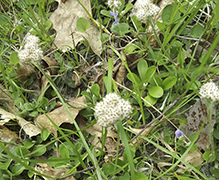 |
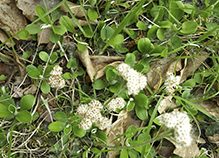 |
||||
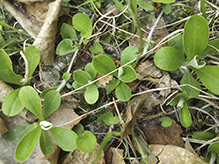 |
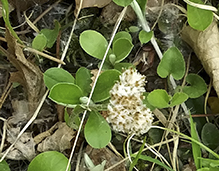 |
||||
MinnesotaSeasons.com Photos |
|||||
|
|||||

Slideshows |
||

Visitor Videos |
|||
Share your video of this plant. |
|||
| This button not working for you? Simply email us at info@MinnesotaSeasons.com. Attach a video, a YouTube link, or a cloud storage link. |
|||
Other Videos |
|||

Visitor Sightings |
|||||
Report a sighting of this plant. |
|||||
| This button not working for you? Simply email us at info@MinnesotaSeasons.com. Be sure to include a location. |
|||||
| Luciearl 6/7/2022 |
Location: Lake Shore, MN |
||||
MinnesotaSeasons.com Sightings |
|||||

Created: 6/21/2022
Last Updated:
